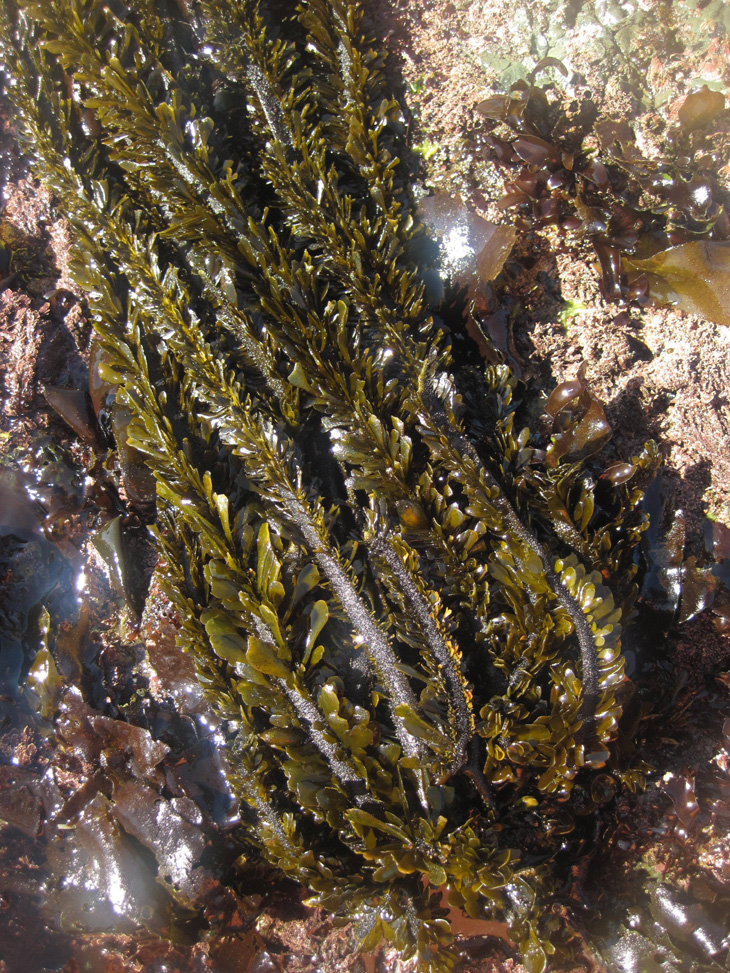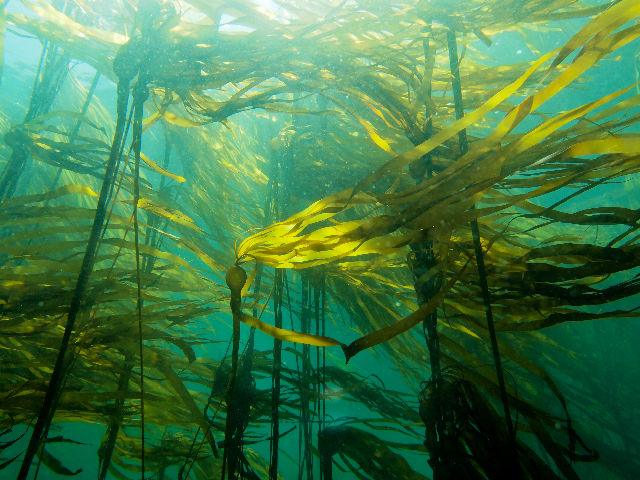The Digital Field Guide to Northern California Tide Pools
A Project of Cambrian Academy Marine Biology Class
The black turban snail, scientific name Tegula funebralis . The species is found in the rocky intertidal zone, where these snails graze on algae, microscopic films, and wrack. Predators of Tegula funebralis include sea otters, and predatory starfish such as Pisaster ochraceous.
California Mussel 1, California Mussel 2,California Mussels 3
Mytilus Californianus, is a large edible mussel, a marine bivalve mollusk in the family Mytilidae. California mussels are found clustered together, often in very large aggregations, on rocks in the upper intertidal zone on the open coast. Their most common food is Phytoplankton. Mussels is a kind of animal that like to live in the mid to high tide zone.It’s favorite food are seas stars and plankton.Beside that,human,orche stars,crabs,pea crab,lobsters,shorebirds are a major threat to mussels because they are predators that eats the mussels.One of the most important thins that keep these mussels from living in the rocks is attatch themselves to rock by screting a liquid that quickly forms strong flexible threats in order for them to stick on the surface on the rock for a long time.
True limpets are often found living on hard surfaces in the intertidal zone.The cup-like shape of a limpet’s shell means an adaptation to their living space on the rocky shores of the sea, the so-called littoral or tidal zone.Limpets are easily to be found in places rich in algae on most rocky shores.Besides, limpets’ slime helps in supporting algae growth, so the limpet also sees to the restoration of its food source. they graze so efficiently they remove young seaweeds and may, therefore prevent the establishment of larger seaweeds
.
Goose barnacles (order Pedunculata), also called stalked barnacles or gooseneck barnacles, are filter-feeding crustaceans that live attached to hard surfaces of rocks and flotsam in the ocean intertidal zone.
Anemones range in size from less than 1¼ centimeters (½ inch) to nearly two meters (six feet) in diameter. A sea anemone is basically the typical polyp: a small sac, attached to the bottom by an adhesive foot, with a column shaped body ending in an oral disc. The mouth is in the middle of the oral disc, surrounded by tentacles. Anemones have a range of ten tentacles to hundreds.
The Aggregating Anemone live in low tide pools attached to rock. They eat fish, mussels, crabs, and sea urchins. The Aggregating Anemone has consumed seabirds.
The volcano barnacle is a relatively tall barnacle which can grow quite large in southern waters, this species was only found attached to washed up objects originating from more southerly seas.
Chitons are small to large marine molluscs in the class Polyplacophora, which formerly was known as Amphineura. Chitons live worldwide, in cold water, warm water, and in the tropics. Most chiton species inhabit intertidal or subtidal zones, and do not extend beyond the photic zone.
.
The Sand Flea is a marine organism that lives in sand on beaches. Sand fleas eat the flesh and blood of small fish and sea stars.
Sunflower Star Pycnopodia helianthoides: This sea star eats sea urchins, clams, snails and other invertebrates. It is the largest sea star in the world and lives in the North Pacific Ocean in deep water. This sea star moves at one meter a minute, so it can hunt down its prey.
Ochre Star can be found on wave-washed rocky shores, from above the low-tide zone to 90 m in depth. Because they can live in shallow water they need to survive in these living conditions, including strong surges, big temperature changes, dilution by rainfall, and desiccation. It’s very resistant to desiccation and it can tolerate a loss of thirty-percent of its body weight in body fluids. This sea star eats mussels, snails, and barnacles. Adult ochre sea stars have few predators, but may be eaten by sea otters and sea gulls.
Leather Star Dermasterias imbricata: This sea star lives at depths of 100 meters (330 ft.) off the western seaboard coast of North America. It mainly eats sea urchins, sea cucumbers, algae, and sponges. It can crawl at a maximum speed of fifteen centimeters a minute.
Bat Star Strongylocentrotus purpuratus: This star fish lives at approximately 79 meters (279 feet) along the western coast, from Alaska to California. It is a detritivore and a scavenger. The Bat Star “fights” with any other that it meets by pushing one another and laying and arm on the other.
Shore Crab
They come in a variety of colours. They are often green or brown. They have eight legs and two large pincers. The width across the shell is up to 5 centimetres (2.0 in). The usual width is about 2 to 3 centimetres (0.79 to 1.18 in).
They are normally found in the North Atlantic or the Baltic Sea but are beginning to live in many other areas of the world. Shore crabs live on beaches and rocky shores.
Shore crabs are a nocturnal predator which means it hunts at night. They eat small crustaceans, molluscs, worms and some fish.
A female shore crab can lay up to nearly 200 thousand eggs at once. They carry the eggs with them until they hatch. Like most crabs, when a shore crab gets too big for its shell, it sheds its shell. After that, it has a new soft shell which soon hardens.
Most species have long, spirally curved abdomens, which are soft, unlike the hard, calcified abdomens seen in related crustaceans. Most frequently, hermit crabs use the shells of sea snails (although the shells of bivalves and scaphopods and even hollow pieces of wood and stone are used by some species).
– As the hermit crab grows in size, it must find a larger shell and abandon the previous one. This habit of living in a second-hand shell gives rise to the popular name “hermit crab”, by analogy to a hermit who lives alone. When the largest crab moves into the new shell, the second-biggest crab moves into the newly vacated shell, thereby making its previous shell available to the third crab, and so on.
– Most species are aquatic and live in varying depths of salt water, from shallow reefs and shorelines to deep sea bottoms. Tropical areas host some terrestrial species, though even those have aquatic larvae and therefore need access to water for reproduction. Most hermit crabs are nocturnal.
Perch Fish
Perch are carnivorous fish that are most commonly found in small ponds, lakes, streams, or rivers. These fish feed on smaller fish, shellfish, or insect larvae, but can be caught with nearly any bait. They commonly spawn during the spring, when the females lay strings of eggs in covered areas such as near branches or underwater plants.
Tidepool Sculpin
Occurs in the North Pacific from the Sea of Okhotsk and the Bering Sea to southern California. Benthic feeders eating small invertebrates, including shrimp and worms. In areas of rough surf, it appears in sheltered spaces and can leave tide pools if environmental conditions are poor. Sculpin can also breathe air when out of water.
Opaleye Fish
Opaleye occur from San Francisco, California, to Cabo San Lucas, Baja California. Opaleye primarily eat marine algae, with or without encrustations of organisms. Other food sources include feather boa kelp, giant kelp, sea lettuce, coralline algae, small tube-dwelling worms, and red crabs. This species inhabits rocky shorelines and kelp beds. Concentrations of adults are found off California in 65 or so feet of water.
Monkeyface Eel
Ranging from southern Oregon down to the northern reaches of the Mexican state of Baja California, Monkeyface eel are coastal fish that live in rocky, tidal areas close to shore. While young Monkeyface eel feed on zooplanktons and crustaceans, adults are primarily herbivorous, feeding red and green algae. The fish spawn on the seafloor and shows some nest guarding behavior.
Feather boa algae, commonly known as feather boa kelp, is a type of kelp that has colors varying from green to brown and resembles the feather boa that you often see on fashion shows. It is usually found in mid- and sub-tidal habitats on lower intertidal rocks in areas where waves occur. It has a thing called holdfast, which allows it to adhere strongly to rocks and not be removed by the waves coming in. The feather boa kelp produces its own food through photosynthesis. And it is mostly eaten by sea nails (i.e. Seaweed Limpet).
The Aggregating Anemone lives in low tide pools attached to rock. It eats fish, mussels, crabs, and sea urchins. The Aggregating Anemone has consumed seabirds.
Bull Kelp
Bull kelp provide protective shelter for young fishes and many invertebrate, such as sea Urchins, sea stars, snails and crabs. Bull kelp is an unusual seaweed-meaning it grows from a spore to maturity in one year. They grow fast, sometimes 10 inches for one day. Through photosynthesis it can get required nutrient. Kelp fly maggots eat bull kelp.



